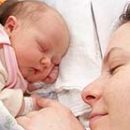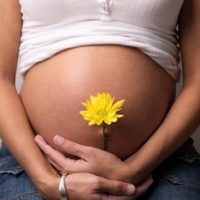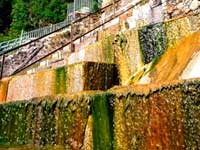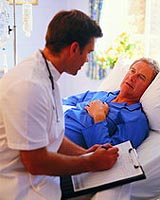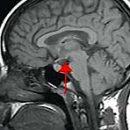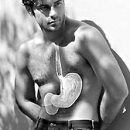Kidneys play an exceptional role in our lives. It is they who perform a number of unique functions, without which we simply could not exist. But, unfortunately, the disease does not bypass these, such necessary bodies.
Content
Here we will talk about glomerulonephritis - inflammatory disease
kidneys that affects one of their structural elements - renal
Gulk, and with time and all the kidney.
Glomerulonephritis
The kidney can be considered the main organ of the urinary system,
because it is she who produces urine. Ureterals, bladder and
Urinary channel serve to accumulate and remove urine.
because it is she who produces urine. Ureterals, bladder and
Urinary channel serve to accumulate and remove urine.
In children at the time of birth, the kidney has already been formed, although they have
Some structural and functional features. Kidney mass in children
relatively more than adults, they first have a rounded form,
and with age acquire a typical bean form. In addition,
Early kidney children are located below, they are more mobile.
The fixing device through insufficient formedity leads to
the fact that kidney children are easily shifted, and nephroptosis occurs
- Lowering one or two kidneys. Their growth passes uneven -
It is especially intensively in the first year of life and in the period
puberty.
Some structural and functional features. Kidney mass in children
relatively more than adults, they first have a rounded form,
and with age acquire a typical bean form. In addition,
Early kidney children are located below, they are more mobile.
The fixing device through insufficient formedity leads to
the fact that kidney children are easily shifted, and nephroptosis occurs
- Lowering one or two kidneys. Their growth passes uneven -
It is especially intensively in the first year of life and in the period
puberty.
Children of different age categories are sick of this disease, but more
In total, there are 3-12 patients among them. And age, in
which appears the first signs of the disease, significantly affects
forecast of the immediate development of the disease. Let's say 10-year-old and
Older children acute glomerulonephritis more often goes into a chronic form.
In total, there are 3-12 patients among them. And age, in
which appears the first signs of the disease, significantly affects
forecast of the immediate development of the disease. Let's say 10-year-old and
Older children acute glomerulonephritis more often goes into a chronic form.
Symptoms Glomerulonephritis
The disease begins 2-3 weeks after the suffered
Scarletins, Angina, Chronic Tonsillitis. In such patients in
Streptococci often detect nasophal. Important enough
The role in the occurrence of the disease is played by such a child
Diseases like pneumonia, influenza and other respiratory infections.
It is known about the appearance of glomerulonephritis caused by the transferred
Influencing, adenovirus infection, as well as a causative virus
Windshield, Epidemic Parotitis. Less often a factor that leads
to the appearance of the disease, there are not bacterial elements such as
Eating food allergens, vaccination, body supercooling,
The use of chemicals and drugs. Discussed
Today there is also a genetic background of increased probability
The occurrence of glomerulonephritis in a certain category of children.
Scarletins, Angina, Chronic Tonsillitis. In such patients in
Streptococci often detect nasophal. Important enough
The role in the occurrence of the disease is played by such a child
Diseases like pneumonia, influenza and other respiratory infections.
It is known about the appearance of glomerulonephritis caused by the transferred
Influencing, adenovirus infection, as well as a causative virus
Windshield, Epidemic Parotitis. Less often a factor that leads
to the appearance of the disease, there are not bacterial elements such as
Eating food allergens, vaccination, body supercooling,
The use of chemicals and drugs. Discussed
Today there is also a genetic background of increased probability
The occurrence of glomerulonephritis in a certain category of children.
The development of the disease is immunopathological
Reactions. It is known that in most cases turn on
Immunocomplex and autoimmune mechanisms. The causative agent is directly
damages the kidneys or fixed on kidney cells followed
joining these complexes of autoantiboders that damage the kidney.
Reactions. It is known that in most cases turn on
Immunocomplex and autoimmune mechanisms. The causative agent is directly
damages the kidneys or fixed on kidney cells followed
joining these complexes of autoantiboders that damage the kidney.
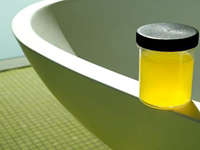
7-14 days after the transferred viral or streptococcal
Infections in the child appear weakness, increased fatigue,
The appetite decreases, the thirst appears, the separation of urine decreases. Sometimes
The initial period of the disease is accompanied by the climb temperature,
Headache, nausea, vomiting. On the face of the child, and in the future
legs, lower back swelling. It is the earliest and frequent
Sign of Glomerulonephritis. Their severity in children is different: from
moderate swelling on face to common edema all over the body. W
Breast children they «Love» put on the lumbar and sacrals. A B
Heavy cases accumulation of fluid occurs in serous cavities
(abdominal, chest, pericardial).
Subsequently, the pallor of the child becomes noticeable, appears
Dull Lower Pain. And this pain is bilateral.
Dull Lower Pain. And this pain is bilateral.
Urine acquires the color of meat lesions, but can be brown or
Colors of black coffee. Color change is explained by hitting urine
large number of red blood cells. Then they talk about red blood cell or
Hematuria. It is believed that the cause of the appearance of red blood cells in the urine of patients
children is to increase the permeability of glomeruli capillaries
Erythrocytes, possible hemorrhage in the Clusters with capillaries
and immediate changes in blood system.
Colors of black coffee. Color change is explained by hitting urine
large number of red blood cells. Then they talk about red blood cell or
Hematuria. It is believed that the cause of the appearance of red blood cells in the urine of patients
children is to increase the permeability of glomeruli capillaries
Erythrocytes, possible hemorrhage in the Clusters with capillaries
and immediate changes in blood system.
Quite often with the development of glomerulonephritis joins
oliguria (reducing urine release) or even anouria (the absence of it
selection). The emergence of these symptoms is due to a decrease
the number of functioning nephrons - they are affected by the disease.
oliguria (reducing urine release) or even anouria (the absence of it
selection). The emergence of these symptoms is due to a decrease
the number of functioning nephrons - they are affected by the disease.
Characteristic urine changes are the appearance of protein - proteinuria.
Usually in patients with glomerulonephite, the amount of protein in the urine is greater than 1
g / l. If the high protein content is detected in surveys, then
Speak about the development of the child nephrotic syndrome, which proceeds
hard, with massive common eductions and other
pathological changes in the body of the child. Other changes in B
Urine appear less often. Usually it is the study of urine that is carried out
repeatedly before treatment and in the process of therapy gives the widest picture
Effects from treatment.
Usually in patients with glomerulonephite, the amount of protein in the urine is greater than 1
g / l. If the high protein content is detected in surveys, then
Speak about the development of the child nephrotic syndrome, which proceeds
hard, with massive common eductions and other
pathological changes in the body of the child. Other changes in B
Urine appear less often. Usually it is the study of urine that is carried out
repeatedly before treatment and in the process of therapy gives the widest picture
Effects from treatment.
Frequent symptom of glomerulonephritis is hypertension. Occurs
enhance arterial pressure - both the maximum and
minimal. If such a phenomenon has persistent and long time
(more than three months), then usually this sign indicates the transition
Diseases in chronic. In this regard, vision worsens,
Headache, drowsiness, nausea appear. In case of hard
The flow of glomerulonephritis, possibly the appearance of complications: acute
renal failure, brain edema or acute cardiac
Insufficiency.
enhance arterial pressure - both the maximum and
minimal. If such a phenomenon has persistent and long time
(more than three months), then usually this sign indicates the transition
Diseases in chronic. In this regard, vision worsens,
Headache, drowsiness, nausea appear. In case of hard
The flow of glomerulonephritis, possibly the appearance of complications: acute
renal failure, brain edema or acute cardiac
Insufficiency.
Glomerulonephritis often leads to involvement in pathological
The process of many organs and body systems: cardiovascular,
digestive, nervous, immune, etc. That is, the disease is
severe and serious and, of course, if a suspicion appeared that
Child acute glomerulonephritis, no time for reflection -
must be diagnosed in a timely and qualified and start and start
treatment.
The process of many organs and body systems: cardiovascular,
digestive, nervous, immune, etc. That is, the disease is
severe and serious and, of course, if a suspicion appeared that
Child acute glomerulonephritis, no time for reflection -
must be diagnosed in a timely and qualified and start and start
treatment.
Treatment of glomerulonephritis
Sick children should be treated in a nephrological hospital under
Strong supervision of a specialist. Treatment is always
Multicomponent. This includes the purpose of the appropriate regime,
nutrition and drug therapy, which is directed to
direct causative agent (bacterial flora or viral),
Mechanism for the development of the disease and certain symptoms. Of course, the best
In the need for one or another component, the doctor will discern - children's
Nephrologist - according to the results of a pre-made examination.
Strong supervision of a specialist. Treatment is always
Multicomponent. This includes the purpose of the appropriate regime,
nutrition and drug therapy, which is directed to
direct causative agent (bacterial flora or viral),
Mechanism for the development of the disease and certain symptoms. Of course, the best
In the need for one or another component, the doctor will discern - children's
Nephrologist - according to the results of a pre-made examination.
In general, treatment in the hospital lasts at least 1.5-2 months. BUT
Next need systematic and long-term monitoring of the child with
The purpose of preventing the occurrence of relapse. Children should be under
Observation of the children's nebologist for 5 years. Need monthly
test urine. Children are advised to protect against infections, preferably
free from practicing physical culture.
Next need systematic and long-term monitoring of the child with
The purpose of preventing the occurrence of relapse. Children should be under
Observation of the children's nebologist for 5 years. Need monthly
test urine. Children are advised to protect against infections, preferably
free from practicing physical culture.
Glomerulonephritis needs to be considered a serious illness, given
The severity of the flow, a number of possible complications. Like any
disease, this disease is easier to overcome if you begin to treat it
as early as possible and necessarily correctly. Therefore, in case of appearance
your child signs similar to the symptoms of glomerulonephritis nor in
Which case does not need to slow. Contact specialists, and then
Together with the doctor you will return the health to your child.
The severity of the flow, a number of possible complications. Like any
disease, this disease is easier to overcome if you begin to treat it
as early as possible and necessarily correctly. Therefore, in case of appearance
your child signs similar to the symptoms of glomerulonephritis nor in
Which case does not need to slow. Contact specialists, and then
Together with the doctor you will return the health to your child.

